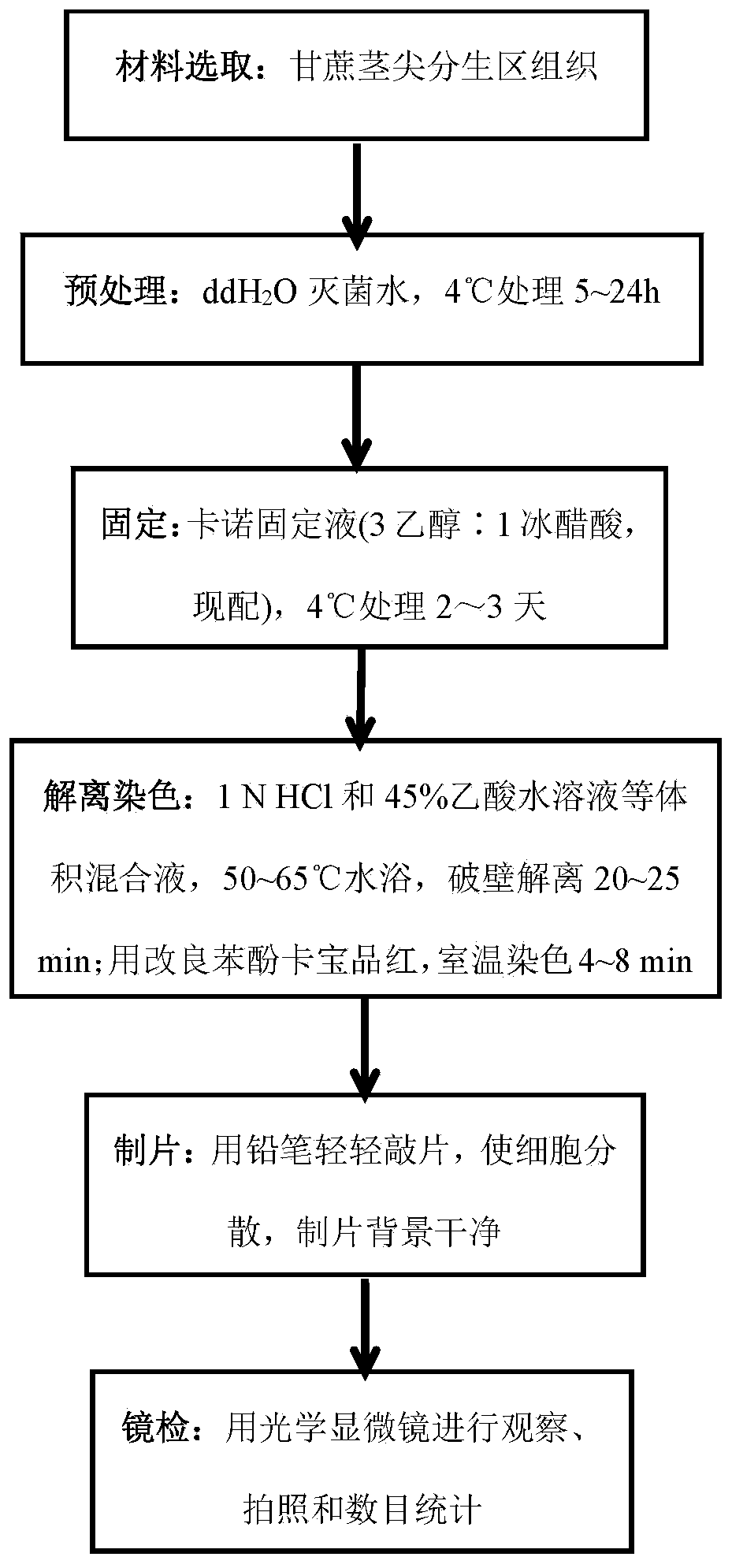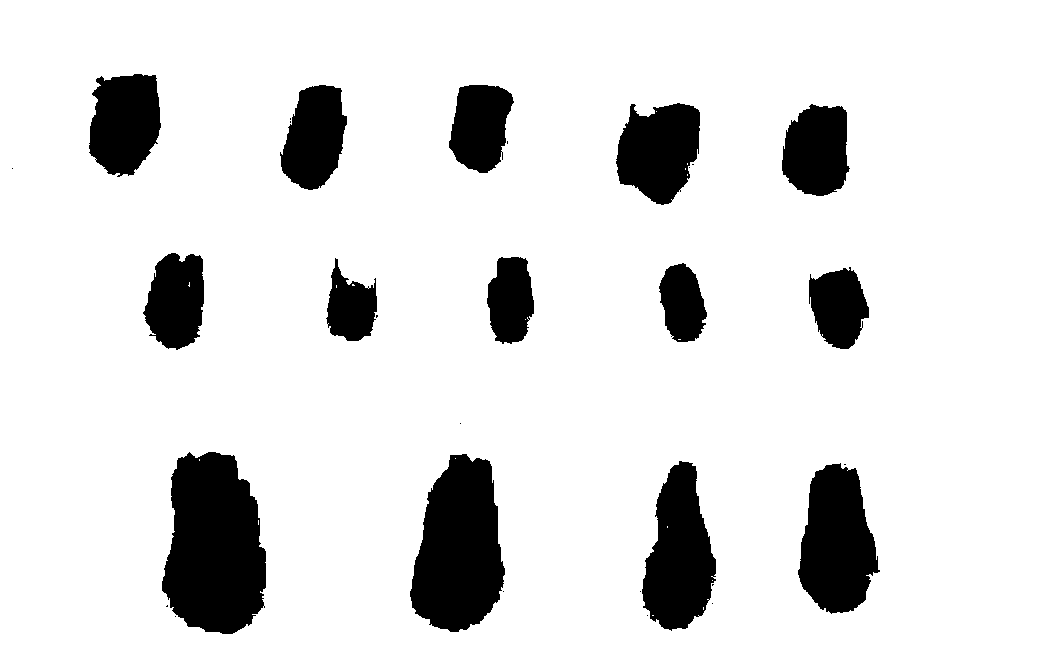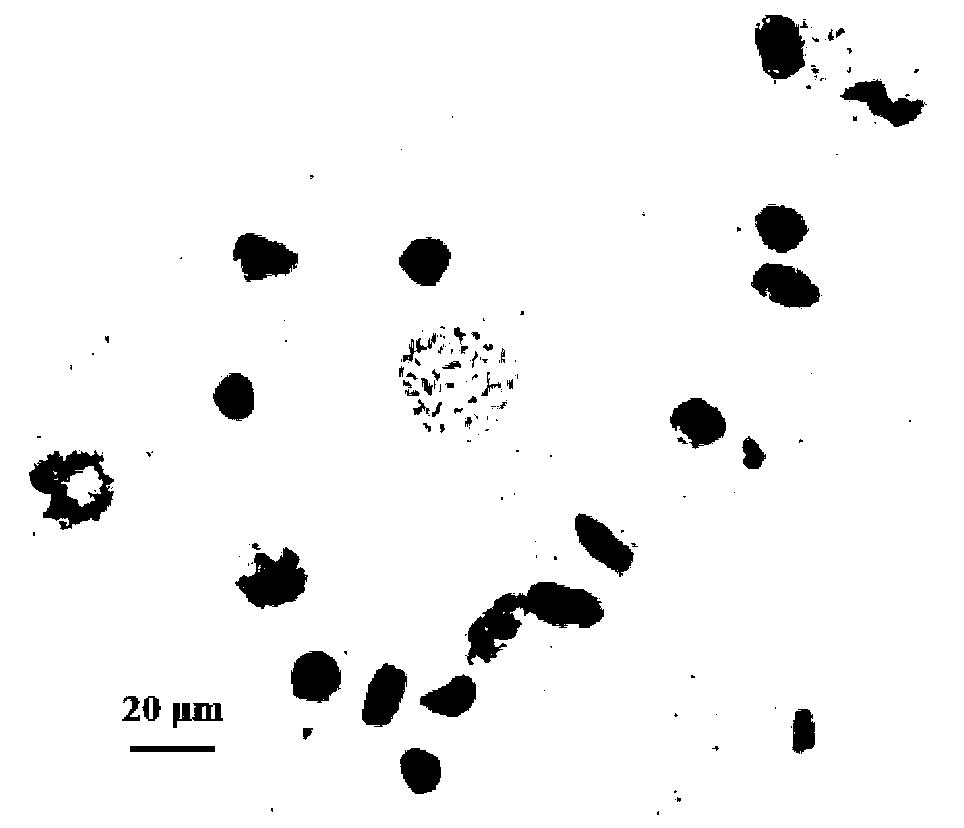Efficient sugarcane or sugarcane related species stem tip chromosome flaking method
A technology of chromosome production and related species, applied in the field of cell biology, can solve the problem of difficult to obtain chromosome glass slide specimens of metaphase cells, different root tip thickness, tenderness, and sticky root tips of hydroponic sugarcane and other problems, to achieve the effect of saving film production time and microscopic observation time, clear chromosome structure, and shortening the experimental cycle
- Summary
- Abstract
- Description
- Claims
- Application Information
AI Technical Summary
Problems solved by technology
Method used
Image
Examples
Embodiment 1
[0062] Method for Chromosome Preparation of Sugarcane Shoot Tip
[0063] 1. Using sugarcane as the test material, collect the stem tips of sugarcane in the field in the morning (9:00-11:00) on a sunny day (see figure 2 ) meristem tissue cut into 0.3cm 3 The small blocks are preprocessed.
[0064] 2. Pretreatment with pre-cooled ddH 2 Soak in O sterilized water, pretreat at 4°C for 12h, then fix with Carnot’s fixative solution (1 glacial acetic acid: 3 ethanol, now prepared), 4°C refrigerator for 3 days, and place the meristem tissue in a 70% Store in ethanol at 4°C for long-term use.
[0065] 3. When making slices, take out the stored meristem tissue materials and use ddH 2 Rinse twice with O sterile water, 10 min each time. Then use a mixture of equal volume of 1 mol / L HCl solution and 45% acetic acid aqueous solution at 60°C for 20 min in a water bath for dissociation. with ddH 2 O rinse with sterile water for 10 minutes. Cut off the shoot apex meristem tissue and p...
Embodiment 2
[0094] Chromosome Number Identification of Parent Species and Hybrid Progeny of Sugarcane
[0095] 1. Using sugarcane original parent varieties Valdeira and 57NG208, hybrid parent varieties Mintang 70-611 and RB72-454 and hybrid offspring germplasm F 1 Cliff City 96-48 and BC 2 Yuncane 07-86 was used as the experimental material, and the shoot apical meristematic zone tissues of sugarcane were collected from 9:00 to 11:00 am on a sunny day for pretreatment.
[0096] 2. Put the meristem tissue into a penicillin bottle and pre-treat with pre-cooled ddH 2 Soak in O sterilized water, pretreat at 4°C for 20 h, fix with Carnot’s fixative solution (glacial acetic acid:ethanol = 1:3), and fix in a 4°C refrigerator for 2 to 3 days, and place the meristem tissue at 70 % ethanol at 4°C for long-term storage.
[0097] 3. Take out the stored meristematic tissue material and use ddH 2 Rinse twice with O sterile water, 10 min each time. Then use an equal volume of 1mol / L HCl solution an...
Embodiment 3
[0103] Chromosome Number Identification of Wild Sugarcane Species and Related Genus Plants
[0104] The wild species of sugarcane, cut hand dense and wild species with large stems, are closely related plants of Banmao, Miscanthus, Dianmao and Hebawang. They contain many new resistance genes that are not found in sugarcane. They have strong perennial roots and good clustering It is of great value in the hybrid utilization and genetic improvement of sugarcane. In-depth research on the chromosomal ploidy and cytological genetic behavior of these resources will lay the foundation for the classification, identification, mining and utilization of resources. In the present invention, wild sugarcane species, wild species with large stems and three sugarcane close relatives are used as test materials, and they go to the National Sugarcane Germplasm Resource Garden at 9:00 to 11:00 am on a sunny day to collect stem apex meristems. Tissues are pretreated to investigate whether the techni...
PUM
 Login to View More
Login to View More Abstract
Description
Claims
Application Information
 Login to View More
Login to View More - R&D
- Intellectual Property
- Life Sciences
- Materials
- Tech Scout
- Unparalleled Data Quality
- Higher Quality Content
- 60% Fewer Hallucinations
Browse by: Latest US Patents, China's latest patents, Technical Efficacy Thesaurus, Application Domain, Technology Topic, Popular Technical Reports.
© 2025 PatSnap. All rights reserved.Legal|Privacy policy|Modern Slavery Act Transparency Statement|Sitemap|About US| Contact US: help@patsnap.com



